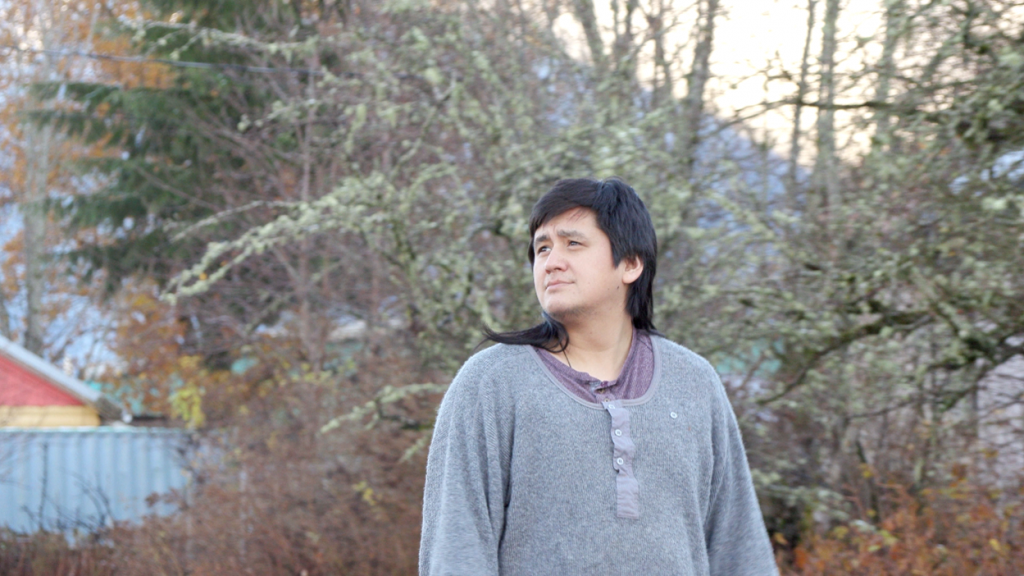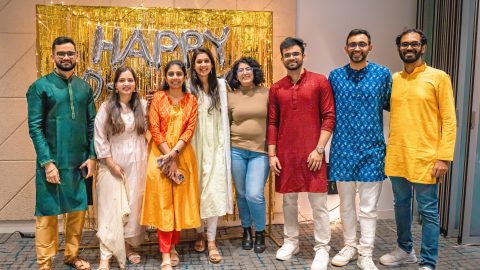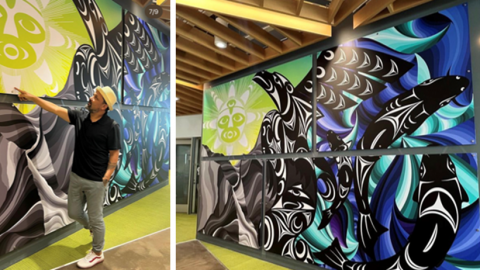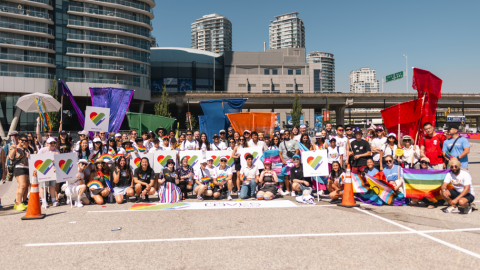Connectivity Powers Connections: Stl’mstaliwa – The Full Human Experience
A video starts playing, and you see a desk in the woods. There’s greenery everywhere, with dew clinging to leaves on trees and sunlight streaming through overlapping branches. Sitting at the desk, waving “yaw” (pronounced ya-o-w, meaning hello) is Jerrel Nelson.
Jerrel is the Engagement Ambassador for the Nuxalk First Nation, and this is his office.
This is where the fun happens. This is where the education happens. – Jerrel Nelson
Over the last six months, Jerrel has been collaborating with Microsoft on a project to engage his community in language and culture – made possible by recent improvements in high-speed connectivity.
Jerrel grew up in the traditional territories of Q’umk’uts and Kwatna, known today as the small town of Bella Coola, British Columbia. The town sits within a narrow valley in BC’s Central Coast; it’s over one hundred kilometres up an ocean inlet in a fjord system flanked by countless towering mountains – none less than fifteen hundred metres tall. Everywhere you look is epic, striking nature.
The valley is remote, with a local population hovering around two thousand people. The closest town with cell service is Williams Lake (population: approx. 25, 000) – nearly five hundred kilometres away – across the Chilcotin Plateau and through the ranch lands that border Highway 20. This is the home of the Nuxalk First Nation.
Jerrel has been working on “Stl’mstaliwa – The Full Human Experience”. It’s a video-based knowledge sharing project using Microsoft Flip, a free web and mobile app that classrooms (and more) around the world use to record, edit, and share videos asynchronously, with a user experience akin to that of a social media platform. The project is a year in the making, led by the Nuxalk Nation and supported by cross-team collaboration from Microsoft Vancouver, Flip, and Microsoft’s Airband Initiative. But the foundation for this initiative is built upon another project that’s been in the works for years.
Think about how much time you spend online. It’s likely part of your daily routine, and a big contributor to how you participate in popular culture. Did any songs from TikTok make it into your Spotify Wrapped this year? Learn a new recipe with a YouTube video as your guide? Post a pic of the meal on Instagram or Facebook? Many of us have endless, almost overwhelming access to our world and all its knowledge.
But this isn’t the case for everyone. The digital divide in North America persists and with the rate of emerging technologies accelerating exponentially, it’s likely to grow if left unchecked. In fact, a 2021 report by the Royal Bank of Canada analyzing economic data and summarizing perspectives from Indigenous stakeholders on how to unlock their economic potential found that more than three quarters of First Nations households in remote communities didn’t have access to a good internet speed2.
Until now, Bella Coola has been among this demographic. With the number of core services shifting to digital systems – from accessing paystubs, to doing your taxes, to booking medical appointments – the need to bridge this gap it is greater than ever before. This is especially relevant in Bella Coola, as many Nuxalkmc (Nuxalk People) rely solely on Wi-Fi to engage with digital services of any kind.
“The Nation has been looking for better connectivity for a decade,” explained Joseph Nash, IT Director at the Nuxalk Nation Band Office. “In the last five years, the Connected Coast project came through.”
The Connected Coast is a partnership between internet service provider, City West and the Strathcona Regional District (SDR). The project is bringing high-speed internet to remote communities along BC’s coastline via the placement of a subsea fibre-optic cable that stretches from Prince Rupert south to Vancouver and around Vancouver Island. It’s estimated that the project has the potential to benefit 175,000 British Columbians, living in 90,000 households. After two years of network design, and three years of construction, Bella Coola’s network is now active.
In preparation, Joseph spearheaded the Nuxalk Nation’s involvement. With faster internet speeds incoming, he considered how connectivity could transform lives and positively impact the valley with one idea bubbling to the surface: leverage video and social media to put Nuxalk culture in the hands – and on the screens – of community members. This would be something new for the Nation, and concerns over security and data sovereignty were top of mind. To get culture online safely, the Nation would need to find the right product, and a trustworthy partner.
In the Fall of 2021, several Nations gathered in Vancouver for the announcement of the Coastal First Nations: Great Bear Initiative, a shared project between CFN, Digital, Rogers, Microsoft and several more partners. Joseph was among the attendees at a roundtable meeting held in Microsoft’s Vancouver campus – meeting local leadership and talking about the projects Nations had in mind. It was here that the connection to Flip (and eventually Airband) began.
Flip sounded like a fit – safe and secure, intuitive and interactive. A free educational tool that feels like social media. Joseph and his colleagues at the Band Office got together to explore content themes, looking for a way to safely and effectively blend traditional Nuxalk knowledge with a modern digital medium.
“Brainstorming together, we talked about some of the other projects that I’d been involved with,” recalled Carrigan Talio, Economic Development Coordinator and a newly elected Council Member for the Nuxalk Nation. “I’m also on the Nuxalk Ancestral Governance Committee (AGC),” she shared. Given this, they reviewed the AGC handbook and decided to centre the project on the concept of Stl’mstaliwa – The Nuxalk Nation’s sixteen foundational cultural values.
For the Nation, there were several factors to consider. For thousands of years, Nuxalk culture has been passed from generation to generation orally. This critical form of knowledge and language sharing was interrupted by the colonization of Canada, and over the past half-decade, Elders in the community have been focused on recovering and protecting what knowledge they can to share it with the next generation.
Carrigan, Joseph, and other colleagues at the Band Office felt a video-based project could be the next big step in making cultural knowledge truly accessible to young Nuxalkmc. “We’re so lucky to have the Elders that we have had, who have compiled so much, documented everything that we do have [today],” said Carrigan, “so I think it’s time to start really implementing [this knowledge] into our daily lives.”
The Flip team was committed to providing technical support, all they needed was funding and the right person to bring the work to life. Joseph reached back out to the team he’d met at Microsoft in Vancouver and learned that empowering communities through connectivity is the mission for Airband.
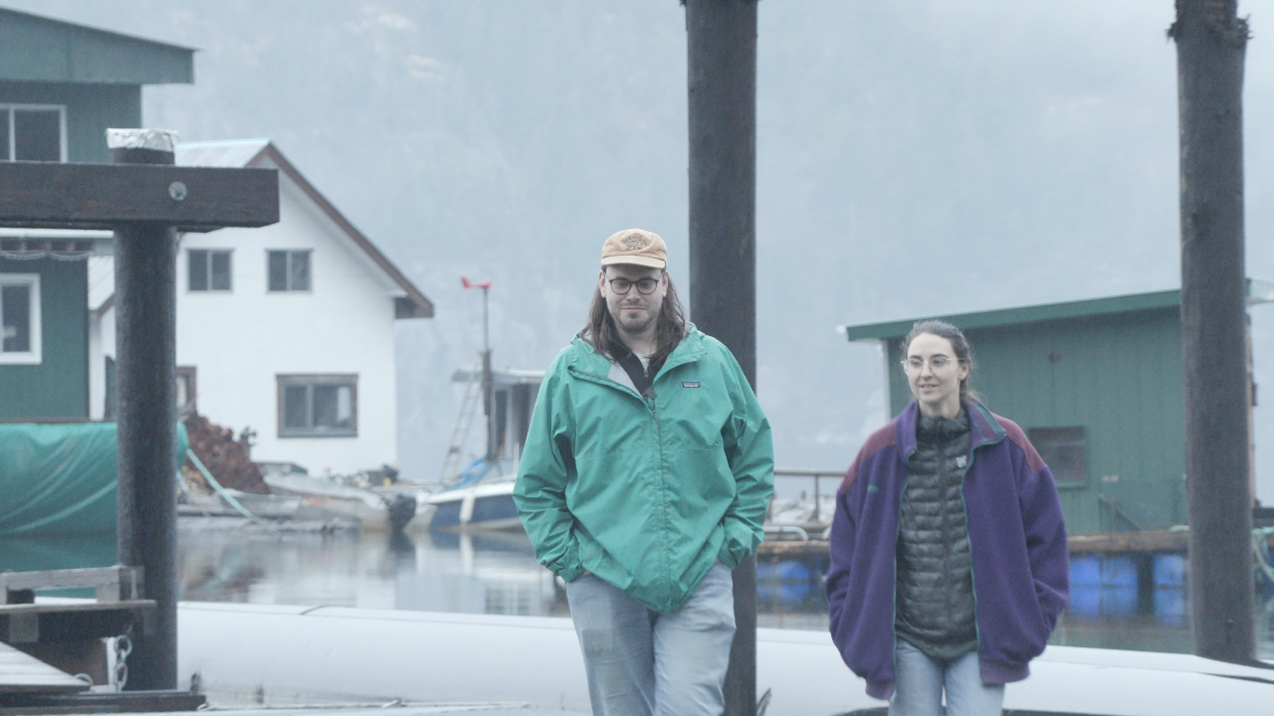
“Microsoft’s Airband Initiative is Microsoft’s commitment to increase internet access around the world,” explained Roman Nelson, Partnerships Manager at Airband. “The initiative started in the United States but has quickly expanded to a number of projects in in North America, Latin America, Africa, Asia, and the Pacific.” Airband partners with internet service providers, technology companies, governments, and international development organizations, enabling providers to expand their networks into areas that don’t currently have high-speed connectivity. “[And we’re particularly] interested in rural and remote places that have been historically underserved and are impacted by this issue,” added Roman.
Upon being re-introduced Roman in 2022, Joseph pitched him the Nation’s idea for a video-based cultural connection project on Microsoft Flip. The videos would be like a digital microphone, increasing the reach and accessibility of Nuxalk language preservation efforts and the sharing of traditional knowledge using a modern medium familiar to younger generations. Being online, the content would be accessible by Nuxalkmc in Bella Coola, at school and in the home, as well as by community members in Vancouver, the US, and abroad.
One of Airband’s main pillars is Digital Transformation – the empowerment of communities once high-speed access is in place. Roman’s interest was piqued. The Nation already had internet on the way, and their project plan presented an opportunity to lean in with much needed funding.
“[This] was a great opportunity for us, as Airband, to show the power that internet connectivity can have on communities, and also leverage our partner teams within Microsoft,” noted Roman. Common ground had been established for all collaborators: empower community through connectivity. And after months of work developing relationships and setting up a partnership model, it was finally time to hire someone to create the content.
The team knew it had to be someone deeply connected to the community – a knowledge keeper with a strong grasp on the language and a natural talent for storytelling. Someone young Nuxalkmc would connect with, and who could be trusted to adapt traditional knowledge for a digital world.
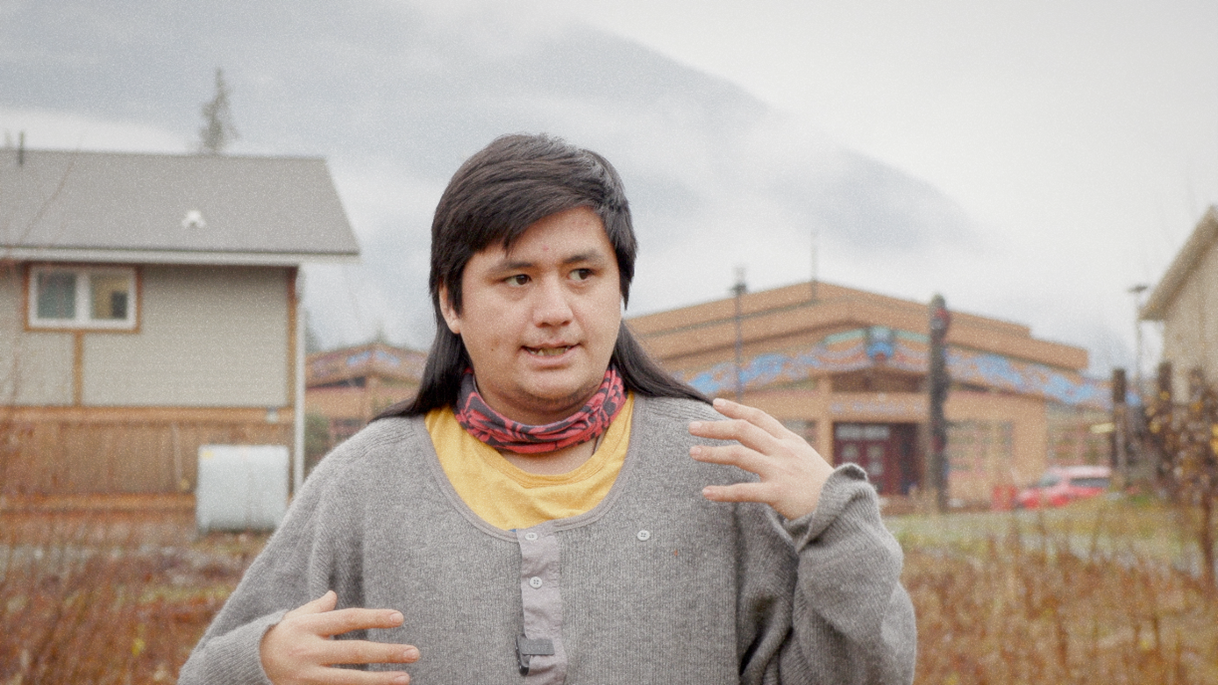
It had to be Laaqwmays – or as he’s known by his English name, Jerrel Nelson. Jerrel is a storyteller through and through. He grew up in Bella Coola and has spent his life devoted to sharing the stories of the valley and of his people. “I started storytelling on the playground,” said Jerrel, “and at seventeen years old, I became a teacher.”
Now twenty-five, Jerrel has had more experience sharing knowledge than most people his age – he’s been a tour guide, he’s the go-to MC for potlaches and community events, and he’s been a language teacher at the Nuxalk Band School for the past seven years.
A committee formed to select someone to take on the role of Engagement Ambassador for the Nuxalk Nation – they would be responsible for the planning, production, and promotion of the Stl’mstaliwa video project. With Jerrel’s experience sharing knowledge, teaching language, and the years he’d spent building relationships with local youth, it seemed he’d be perfect fit. Friends and family urged him to apply, and when he did, the committee’s decision was unanimous. He was offered the job.
But Jerrel’s decision wasn’t as straightforward. Accepting the offer would mean leaving his position teaching the Nuxalkmc language. “It seemed like a really simple choice, but it wasn’t. “I’d spent seven years at the school,” recalled Jerrel. He wasn’t sure what to expect with this new role, but ultimately that’s what made him say yes. “Because this is something new. And this is something that hasn’t been done before.”
Jerrel got a two-for-one deal in accepting the position – actually, it was more like a five-for-one. “I’m going to be on-screen talent; I’m going to be my own editor; I’m going to be my own secretary; I’m going to be my own… everything!” The first few days were challenging.
“Knowing your audience is a very important skill, right?” noted Jerrel. Confident he had this part down pat, he endeavored to approach videomaking the same way he tells stories: with personal connection, openness, and a wicked sense of humour. “If I can tell stories that way, why can’t I make videos that way?”
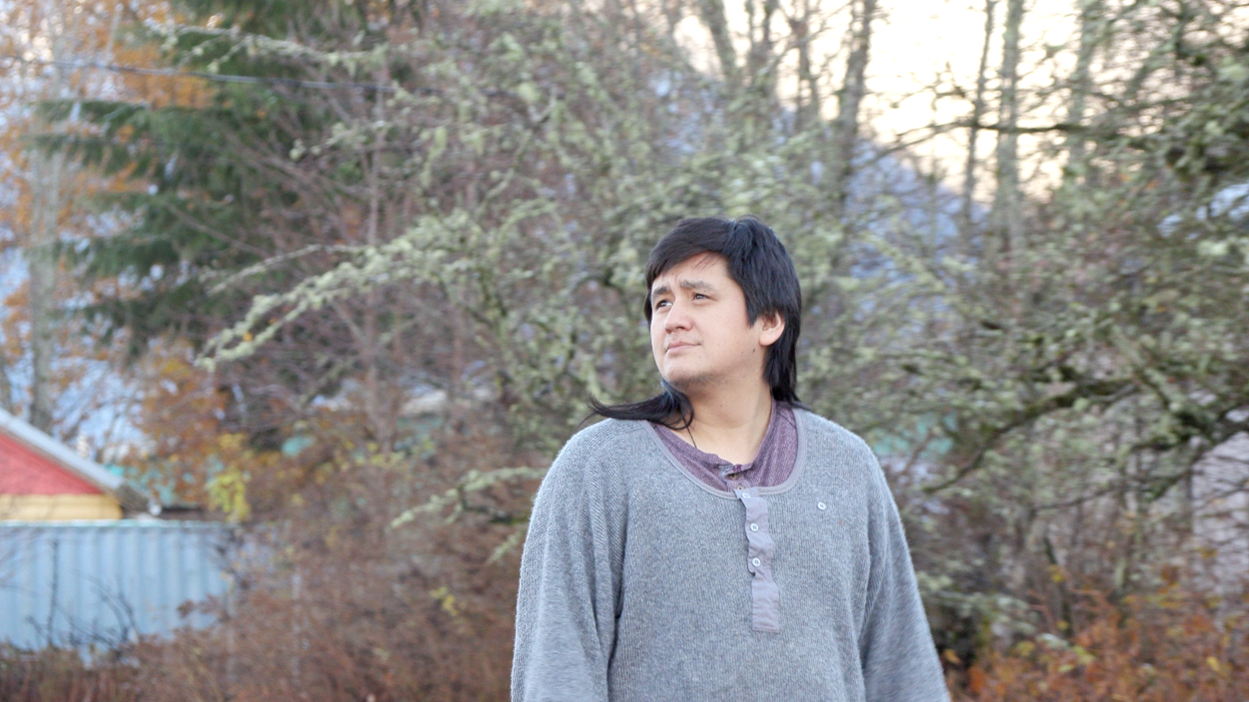
He knew what he was trying to do – make videos showcasing Nuxalk cultural values – but the how entirely was up to him. It’s around this time that Jerrel and I first met.
It was the start of summer of 2023 and Jerrel was just getting into planning. How many videos would there be? Where would they be filmed? In what style would they be edited? How would he make sure the community feels comfortable using Flip to engage with them?
I’d been working at Microsoft Vancouver for four years and had gained experience producing content reflecting campus culture for our regional social platforms. Jerrel and I had a lot in common. We were both responsible for creating content that engaged our communities. We chatted about where he was at in his project timeline, and I got the chance to learn more about Stl’mstaliwa – the foundational concept for his videos.
Nuxalkmc have sixteen traditional cultural values that make up Stl’mstaliwa – a term that translates roughly in English to “The Full Human Experience”. If one’s Full Human Experience is like a house, then the sixteen cultural values that comprise it are like the frame and foundation. Each component is integral to the house’s strength and stability. These values are Nuxalk-owned knowledge; they are touchpoints that Nuxalkmc engage with throughout the entire course of their lives. They’ve been passed down orally, from generation to generation, for thousands of years.
Today, these values aren’t common knowledge, so deciding how to package and deliver them digitally was a challenge. “Everybody is just a bit uneasy to share,” mentioned Carrigan.
“I think the context is helpful – it’s only been one hundred and thirty-five years that this area has been known as Bella Coola. The first [settler] colony came in 1888, [just] 10 years before my grandfather was born,” said Charles (Charlie) Nelson, Hereditary Chief and Chief of Administration for the Nuxalk First Nation, as he walked us through his people’s history. “Prior to contact, we had a minimum of ten thousand people [here]. Come contact, we’re down to two hundred people.”
In the mid-eighteen-hundreds, the valley’s population was devastated by smallpox in an epidemic that swept through neighbouring Nations along BC’s Central Coast. But the loss suffered through this period of colonization was even greater. From 1884 to 1951 the Indian Act made it illegal for Indigenous people across Canada to express their culture through language and ceremony, with individuals suffering from punishment and imprisonment by Indian Agents – government representatives living on First Nations reserves – if caught. For the Nuxalk Nation, and Indigenous people across the region, the result was an immeasurable loss of language and cultural knowledge.
“By 1951, things had changed for us. In terms of Canadian law, we’re allowed to sing, allowed to dance, allowed to talk our language, we’re allowed to share gifts again, [and] we don’t have to go to jail for [doing] that,” said Charlie.
The Nuxalk Nation has been rebuilding and re-engaging with their culture and language ever since. But after this period of suppression, sharing didn’t come back easily. “It wasn’t really until the nineties that people actually started feeling comfortable about singing and dancing. That’s not long ago,” explained Charlie, “the last Indian Residential School closed in 1996. And that’s not long either – my oldest son was born in 1996.”
The impacts of colonization continue to affect generations of Indigenous people across Canada today. At one point, Jerrel himself was faced with the choice to leave the valley and pursue a western education, or to stay connected to his home. “It didn’t feel fair, that to have a happy, colonial life, that I would have to give up my language, that I’d have to give up my mother, that I’d have to give up my grandmother. It didn’t feel fair,” Jerrel expressed, “and so I took what felt right to me. That was home, that was these mountains; that was my language, that was my culture.”
Jerrel is one of the few Nuxalkmc his age that had the chance to learn a significant amount of traditional knowledge, in a traditional way, while growing up in Bella Coola. “It was started in a longhouse with a fire and an old man, and a young guy who wanted to know things. And thousands of years later, I learned my knowledge at a coffee table with my Grumpa.” Jerrel believes that using video to amplify Stl’mstaliwa online will keep that spirit alive. “But [we’re] doing it in a way that makes sense for kids in the twenty-first century.”
“You’re always hoping that somebody would pick that up. And it’s good to see that he’s picking it up [using] different media. He’s doing it in a different way. He doesn’t realize [how much] he’s doing in terms of carrying it on,” said Charlie, who is also Jerrel’s uncle.
“It’s knowledge that everybody should know,” Jerrel stated, “or it’s stuff that everybody should have had the opportunity to know.” Today, he feels the time is right to leverage digital tools and empower his community to re-engage with their culture. “We’re no longer stuck in a time when we can’t share. I think it’s important to be able to empower every voice.”
The idea for making videos about Stl’mstaliwa was to create a playlist on Microsoft Flip for each of its sixteen values. In each playlist, a series of videos would break down the value for viewers. From origins of the word to pronunciation to interviews with elders, each series would end with examples, challenging viewers to incorporate learnings and lessons into their daily lives. To keep viewers coming back for more, he decided to format the videos like episodes of a classic late-night TV program.
“Life wasn’t very structured. And one of the few things that I could rely on was a meal at 5:30 and watching Jimmy Fallon with my family,” remarked Jerrel. Late night TV had offered him a stable source of information, delivered in a fun, humorous, and relatable manor. “Why can’t we be serious and goofy? I’ve always handled my tears best with laughter. I wanted it to be funny because I know I’m funny.”
He knew he wanted to film everything outside, including one key late-night staple – a desk. Jerrel chose a spot in the forest about ten minutes from the Band Office and brought in all his props, including a wooden desk he’d built with his father when he was little.
As Jerrel got to work scripting, filming, and editing, we stayed connected. I introduced him to my colleague Kyle, videographer for Microsoft Vancouver, who was able to provide additional support throughout the content creation process. And there were regular connections with Elizabeth Schmuhl, Community Program Manager for Flip.
“This is my first job at Microsoft,” said Elizabeth when we chatted about her involvement in the project. “I’m a former educator and part of the reason I came to work [on the Flip team] was because of its focus on access and equity,” With that in common, Elizabeth and Jerrel spent ample time together testing the product and getting a handle on the app’s security features.
And over the next six months, we held regular syncs with Jerrel and Joseph. When roadblocks popped up – from writer’s block to lost files to navigating an ever-changing UI – the team would jump in to troubleshoot. And the support ended up going both ways. “I really appreciate the way in which Jerrel and Joseph asked questions,” said Elizabeth, “I’ve been able to go back to the team and say things like, hey, we removed the option where you can move videos [from one playlist to another] – what is the workaround?”
On November 15th, 2023, Stl’mstaliwa – The Full Human Experience project went live with more than one hundred videos – each 1 to 30 minutes in length – uploaded to the Nuxalk Nation’s secure group on Microsoft Flip. Jerrel held a launch event in Bella Coola, and Kyle and I were lucky enough to be there in person.
The event’s purpose was to share the project with the community, walk folks through the Flip sign up process, and give everyone a chance to ask questions. We’d spent the days leading up getting to know Jerrel in his hometown. He brought us to his set in the woods and told us about his accelerated journey of becoming a content creator – the wins and the losses, the lessons and the learnings. On event day, everything was in place and nervousness aside, Jerrel was ready.
“It felt very heartwarming to be at that event,” noted Joseph, fondly remembering how it felt to watch Jerrel grab the mic and share the project with his family, friends and fellow Nuxalk community members. “There was Jerrel. [After] six months of hard work, he had made over one hundred videos. From not knowing what video creation is to learning how to use a camera, microphone positioning, [learning] how to conduct interviews, setting up his own style… He had poured his heart and soul into it.”
After Jerrel’s opening remarks, the floor was open for questions. “There were babies through to thirty-year-olds, to middle aged [folks], to elders there. And then hereditary chief was there to ask him great questions,” said Joseph, “it’s just really heartwarming to see such a broad variety of community engaged.”
The event was a success. “Loads of people turned up. The venue was full [with] queues of people going through the whole entry process,” said Joseph. By the end of the event, over 60 Nuxalkmc had downloaded Flip and started engaging with the content.
Recalling the Nuxalk Nation’s painful and recent history resulting in the loss of their culture, and the tremendous effort the last few generations have put into re-learning what they can, community members were curious about how their knowledge would be kept secure in this new digital space.
During the event, Jerrel got the chance to review all of Flip’s privacy and security capabilities. “From what I was gathering at the event, that’s what made people feel safe. Because it’s [about] building that trust back,” shared Carrigan.
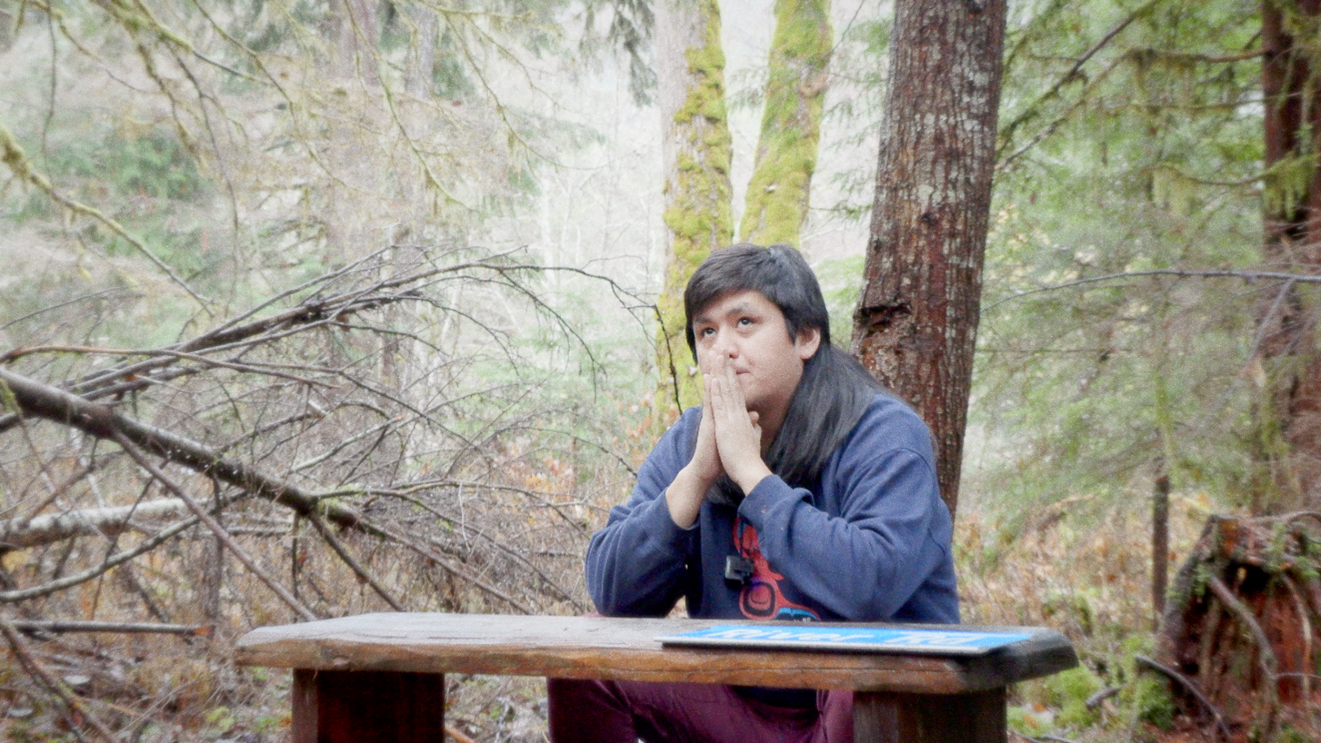
And that brings us back to the purpose of the project in the first place. “I think although it’s scary, it starts the conversation of how to share better, because we live in a world of technology and social media. It’s not just oral or written sharing anymore,” said Carrigan. “There are better ways that we can engage our [community] members and culture is healing, right?”
“This is just the beginning,” said Joseph, “Now we can start looking towards, you know, not even the sky’s the limit – satellites above the sky,” he chuckled as we wrapped up our last chat on the docks bordering the Bella Coola estuary.
As for Jerrel, he’s not finished telling stories, and he’s certainly not finished making videos. There’s more content in the works, with new videos by Jerrel that share the values of Stl’mstaliwa with Nuxalkmc anytime, anyplace.
Magic happens when people come together with a common goal. By collaborating across regions, departments, and teams, this project empowered a community through technology.
“From the beginning, this project has been community-led,” explained Roman. “Microsoft contributed tools and resources,” he added, “but the community knows what they need and how it should be implemented.”
“This felt like Microsoft really getting behind its mission,” Elizabeth agreed.
Jerrel and I were both emotional as we wrapped up our final interview. “My hope is that my community is able to use this content and this platform as a blueprint for their own Stl’mstaliwa.”

